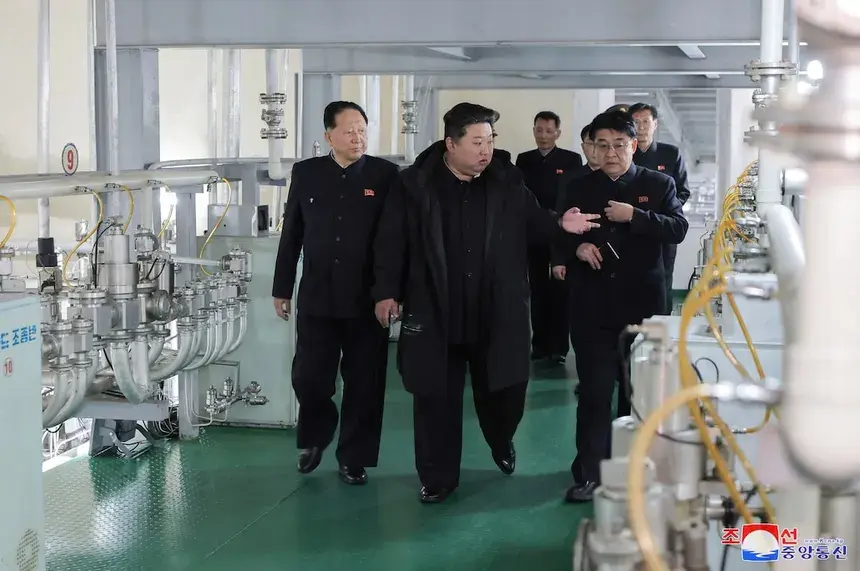
North Korean leader Kim Jong Un has declared that the country will unveil a new defense policy at an upcoming meeting of the ruling party. The policy will emphasize boosting both nuclear forces and conventional military capabilities together. It’s a major shift in tone, and could have serious implications for regional security, diplomacy, and how North Korea positions itself in world affairs.
Here’s a closer look at what’s going on, why it matters, and what to watch out for.
🧭 What Kim Actually Said
Kim inspected weapons research centers and recently oversaw a military shooting drill. During those inspections, he announced that at the 9th Congress of the Workers’ Party of Korea, the government will put forward a policy aimed at building up nuclear forces and conventional armed forces simultaneously as part of national defense.
He didn’t lay out specific dates or technical details yet, but the idea is to modernize conventional military power while maintaining and perhaps expanding nuclear capabilities.
Part of his justification stems from how North Korea views U.S. and South Korea military exercises. North Korea has sharply criticized upcoming drills between the U.S. and South Korea, calling them provocation and labeling them a “nuclear war drill.” Kim seems to be using those as part of the narrative that justifies bolstering its own deterrence.
🌍 Why Now? Context & Strategic Signals
This announcement doesn’t exist in a vacuum. Several recent events help explain why Kim might be pushing this dual-strength policy now:
Diplomatic Moves & External Relations: Kim has made high-profile visits and held meetings with powerful figures abroad, including the leaders of China and Russia. Those meetings may bolster both his confidence and international alignment.
Recent Weapons Development: North Korea has been conducting more missile engine tests, especially with solid-fuel engines, which can offer faster launch times and easier mobility. These technical improvements strengthen its ability to threaten or deter.
Military Exercises by Others: North Korea sees joint U.S.–South Korea military exercises not just as defensive, but as potential threats. In response, Kim frames his policy as necessary to counterbalance, to ensure that North Korea isn’t left vulnerable.
⚠️ What This Means — Potential Impacts
Regional Tensions Likely to Rise: Neighbors like South Korea, Japan, and others will probably respond. They’ll see this as an escalation. Arms races tend to snowball—if one side ramps up, others often respond.
Diplomatic Strain: This kind of policy doesn’t ease pressure from international actors who want denuclearization or denuclearization talks. It could make diplomatic engagement harder, especially with the U.S. and its allies.
Security Calculus Shift: If North Korea truly modernizes its conventional forces, that might shift how neighboring militaries plan, how deterrence is evaluated, and what kinds of military readiness actions are taken regionally.
Internal Implications: More resources will need to go toward weapons programs, which might affect funding for domestic priorities like infrastructure, healthcare, or everyday citizen welfare. How this balances out inside North Korea could affect stability.
🔍 Things to Watch
To understand how serious this policy shift will be, and how much it will actually change, keep an eye on:
Details at the Party Congress: When the Workers’ Party Congress happens, what exact language is used? Is the policy just symbolic, or does it come with timelines, funding commitments, or specific capability-building plans?
Missile & Weapons Tests Following the Announcement: Testing of new missile engines, delivery systems, or conventional arms will signal real movement from rhetoric to action.
International Response: How will countries like South Korea, Japan, the U.S., China, and Russia react? Will there be sanctions, diplomatic protests, or efforts to counterbalance through alliances or military exercises?
North Korea’s Budget & Economy: Can the regime support increased military spending without undermining domestic welfare? That will test how sustainable this direction is.
Signals of De-escalation vs. Escalation: Will North Korea also show willingness to negotiate or moderate? Or will all communication be about strength and deterrence?

Leave a comment
Your email address will not be published. Required fields are marked *